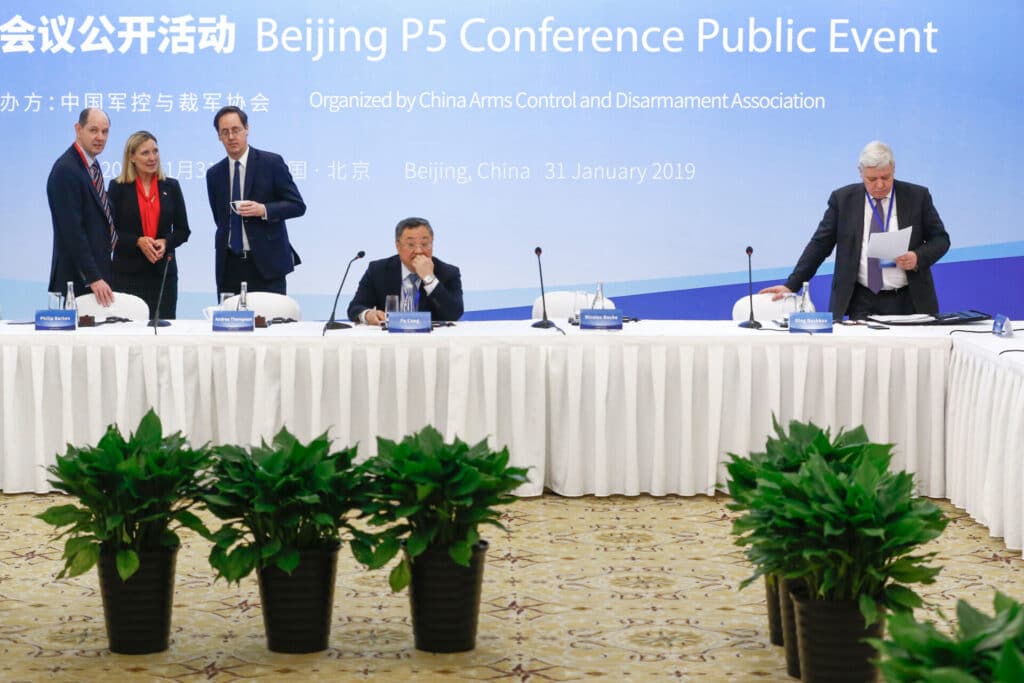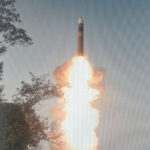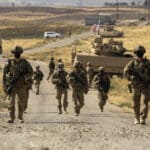All START: a proposal for moving beyond US-Russia arms control
By Amy J. Nelson, Michael O’Hanlon | March 16, 2023

Vladimir Putin’s decision to suspend Russia’s ongoing participation in the New START nuclear arms control agreement is hardly good news. Not only does it represent one more step in the deterioration of broader U.S.-Russia relations, it also undoes the solitary remaining link between the countries in the modern network of arms control treaties that has kept some constraints on their military competition in strategic domains in recent decades.
With that said, and although he certainly meant it as no favor to the United States, President Putin’s decision in February to suspend (but not annul) Russia’s participation in New START may serve a higher purpose, nonetheless.
The arms control void created by a recent pattern of treaty violations, withdrawals, and suspensions creates opportunities for creative thought about what if anything should replace New START when it definitively expires in 2026, including especially the particularly thorny issue of bringing China’s nuclear arsenal into an arms control regime. China has an arsenal that is currently dwarfed in size by the United States’ and Russia’s but seems likely, according to many Western projections, to grow significantly in the next decade. Numerous efforts to “include” China and its arsenal in legally binding arms control treaties have cropped up in recent years, ranging from the dramatic charade of awaiting a Chinese delegation that had not accepted an invitation to US-Russia arms control negotiations in Vienna, Austria to quieter efforts to build capacity for onsite inspections that would necessarily accompany China’s participation in any treaty.
As an alternative to bringing China into existing bilateral treaties, we propose a new strategic framework that would broaden participation in arms control and provide mechanisms to include all five permanent members of the United Nations Security Council (the P-5), with China, Britain, and France joining the United States and Russia in a future accord. Let the brainstorming about the best name for such an accord begin—but one starting point might be to call it “All START,” to underscore that it would include all states that legitimately possess nuclear weapons under the Nuclear Non-Proliferation Treaty (NPT). Indeed, it could eventually even include Israel, India, Pakistan, and North Korea, countries that have refrained from or withdrawn from the NPT, which codifies the division between nuclear and non-nuclear weapons states. Additionally, even though bilateral strategic nuclear arms limitation treaties have traditionally been of finite (and relatively short) durations, this should be an accord of unlimited duration to avoid the requirement to renegotiate at regular intervals when geopolitics may not be conducive.
To achieve its inclusive purpose, All START would de-emphasize quantitative arms limits without jettisoning them entirely. Limits on nuclear warheads and delivery devices, like those obtained under New START, would remain in place for Russia and the United States. The remaining countries would submit information on their own plans for nuclear arsenal modernization and nuclear force deployments. But in the new format, the main obligations of China, the UK, and France would be to accept the transparency and monitoring provisions that are at the heart of modern strategic arms control—and that remain useful even in an era when numerical limitations may now make less sense for many reasons.[i]
An All START accord would continue to emphasize the traditional goals of arms control as first underscored by Thomas Schelling and Morton Halperin in 1961—to reduce the chances of war, to reduce the damage of war should it occur anyway, and to reduce the costs of preparing for possible war. But it would do this through transparency that lowers uncertainty about capabilities and intentions. As such, it would emphasize managing uncertainty as a central purpose of modern arms control, with less devotion to the cause of numerical decline in the size of arsenals.
Time to move beyond bilateral nuclear arms control. Signed by US President Barack Obama and Russian President Dmitry Medvedev in 2010, the New START accord—a successor to the SALT agreements under US Presidents Nixon, Ford, and Carter of the Cold War and the START treaties under President George H.W. Bush—has been useful since its entry into force in 2011. New START limits long-range nuclear warheads that can be mounted on land- and submarine-based missiles and heavy bombers to 1,550 for each side–still several times what would be needed to destroy Russian and American society. But those numbers are 80 percent lower than Cold War levels. Not only has New START reduced the risk of a nuclear accident simply by reducing the number of devices in which such an accident could occur, it has also meant that Russia and the United States saved a lot of money compared to what they might otherwise spend on an unconstrained nuclear arms race. Additionally, through on-site inspections and data exchanges, New START has also fostered transparency and confidence-building—easing fears that either side might be planning a surprise buildup or even nuclear first strike against the other.
Except, of course, that Russia is now suspending those stabilizing measures.
But even without the latest shenanigans from Moscow, New START had become dated. Though it is a much-evolved version of earlier bilateral nuclear limitation agreements, it adheres too closely to the original formula to maintain long-term relevance in an increasingly complex strategic environment. Specifically, limitations on shorter-range or tactical nuclear weapons, where Russia has had a lead, were left for a successor agreement. Likewise, long-range precision-strike conventional weapons, where the United States generally sets the pace, were left for a future negotiation. Same for Putin’s Dr. No-like dream weapons, including silly contraptions without an obvious mission like intercontinental nuclear-armed torpedoes.
Most of all, New START leaves out China—a country that, after decades of being content to marshal nuclear forces less than a tenth the size of the US arsenal, now appears bent on owning 1,500 of its own nuclear warheads by 2035, according to the Pentagon’s latest assessments. The existing treaty also offers no sufficient incentive for Beijing to join. Now is a particularly opportune time for new ideas for bringing China into an arms control agreement. Even though China’s arsenal would likely remain no more than a third of our own arsenal’s size, in a world where Moscow and Beijing increasingly collaborate strategically, such a force level could no longer be considered negligible.
Why not bring China into the existing treaty? Early approaches to China’s nuclear arsenal and its challenge for arms control consisted of repeatedly asking China to join an existing or future arms treaty to, for example, cap its buildup at 1,000 to 1,500 warheads. That number would be several times the size of China’s arsenal today, but remain far below US levels, so, from the Western point of view, it seems reasonable. But unfortunately such a prospect never proved sufficiently enticing to Beijing. Additionally, Putin has called for a return to something like Cold War blocs by requesting that British/French nuclear strength of about 500 warheads be factored in alongside US strategic forces. Combined with US warheads, the British and French contributions could sustain a rough parity between the Western alliance system and the China-Russia “axis.”
Of course, there are several problems with this approach. Not only is China entirely uninterested in this or any other kind of formal arms control at present, Beijing may also feel it may need to grow its arsenal in the near future. If, for example, the United States tries to invoke nuclear superiority in a future Taiwan crisis upon deciding it can no longer count on just conventional military forces to protect the island, China may wish to checkmate that capacity by growing its arsenal to a size that approaches nuclear parity with the United States. Second, and in fairness to Beijing, China is probably tired of getting harangued for its supposedly aggressive nuclear behavior after more than half a century of considerable restraint. If entering arms control talks would subject the China to more criticism of this ilk, China may understandably have little interest.
Third comes a problem for the United States: Even if this kind of accord maintained a certain parity between “East” and “West” today, it would favor Chinese and Russian forces numerically in the long run (since Britain and France have no intentions of building up their own forces). Such an agreement could place the US at a numerical disadvantage and override potential US benefits from the treaty. Finally, such an approach risks pushing Beijing and Moscow even further together through the structure of future arms control accords, when the real US strategic goal should be the Nixonian one of eventually driving them apart.
Our new approach. The right approach taken for a future arms treaty must not to leave China out, yet not bring it in as part of the same bloc as Russia, either. A more creative third way is the approach needed.
Such an approach has many benefits. First, it reduces the uncertainty that drives aggressive behaviors like arms buildups. Should China, along with Britain and France, join the United States and Russia in a formal treaty that mandates verification measures, data exchanges, and consultations, it would foster transparency and reduce uncertainty. This could be a potentially more enticing and feasible negotiation agenda than imposing limits on the new participants.
This new approach would include treaty-based mechanisms to discourage big nuclear buildups—but without formal numerical constraints on China, France, or Britain. The three new participants would be asked to declare, as with the Paris climate-change convention, their nuclear goals for the future. Such declarations would be non-binding, in the sense that they could be modified. But all participants would be subject to inspection and assessments of compliance. They would also be expected to explain and defend their plans for nuclear modernization or expansion. These would be the new and unequivocal requirements for being a “responsible nuclear power.”
The larger logic of All START. All START would not by itself make the world a calm and safe place. No arms control treaty can do this. That is not, nor was it ever, the purpose of arms control. We know enough about the proper aspirations for any arms control regimen by this point to know full well that no technocratic arms control regimen can override or supersede the fundamental problems of international security and global order. The better part of arms-control wisdom is to keep goals in line with political reality.
So, the treaty we propose would neither attempt to curtail all nuclear competition, nor ban some degree of Chinese expansion of its arsenal, nor curb whatever plans the French and British may devise for the future of their arsenals. To attempt as much would be to run at crosscurrents with the prevailing forces and dynamics of today’s great-power relations. Arms control will still be useful under this new architecture—it will just look a little different. Or at least begin a little differently, inverting the process by seeking transparency en route to reductions, rather than transparency for the purpose of verifying reductions.
This approach is less of a departure from “traditional” arms control treaties than it may seem. Arms control is increasingly valuable for the information it provides, and treaties have grown in breadth to include multiple methods of providing information even since SALT I, which relied on national technical means (spy satellites) exclusively.
The treaty we propose could clearly state that by 2030, the onus would be on any country considering a nuclear buildup to justify to the other parties and the world why such an expansion is necessary. Such moral suasion is admittedly not always an adequate tool for limiting the assertive behaviors of nations. But if it did not suffice to limit nuclear arms racing, the other parties would retain the right to withdraw from the treaty framework. Moreover, any willingness by Moscow and Washington to agree, in this or a future accord, to further nuclear cuts would naturally depend in large part on the nuclear expansion efforts of China. That understanding would create at least some implicit leverage to employ with Beijing as well as Moscow.
Further, rather than a numerical limitation treaty of limited duration, this agreement ought to be one of unlimited duration, with provisions for flexibility and adaptation, including a consultative body and a mechanism for including additional members. The flexibility should afford consideration of novel technologies of relevance in the future, as needed. Since these technologies would not necessarily have to be limited or banned, the new treaty framework could aim for the more realistic and still desirable goal of ensuring transparency, such that new technologies do not generate fears of disarming first strikes or other paths towards greater crisis instability in the relations among the world’s nuclear powers. The hope is that, at a more conducive time, reductions and possibly even a missile defense-related declarations could follow.
This arms control framework would be a long-term means of managing uncertainty and enhancing transparency in the nuclear competition, while also keeping at least some lid on the cost of any multi-party nuclear arms race. We know information about nuclear arsenals has high value. This is a tried and tested truth. The proposed approach simply leverages what had become self-evident.
Given the state of great-power relations today, this kind of accord may well not prove negotiable for some time. However, in light of the current eroded state of the international arms control architecture, we are already overdue for a conceptual debate about how to think about the future of arms control once that is again possible. Perhaps Putin has just reminded us to get on with it.
Notes
[i] Cost currently imposes a certain equilibrium on nuclear arsenals, but there is a great disparity in the size of P-5 arsenals, and countries determined to get the bomb outside the scope of international law are achieving their goal.
Together, we make the world safer.
The Bulletin elevates expert voices above the noise. But as an independent nonprofit organization, our operations depend on the support of readers like you. Help us continue to deliver quality journalism that holds leaders accountable. Your support of our work at any level is important. In return, we promise our coverage will be understandable, influential, vigilant, solution-oriented, and fair-minded. Together we can make a difference.
Keywords: All START, China, France, New START, P-5, Russia, UK, United States, nuclear arms control
Topics: Analysis, Nuclear Weapons

















This is utter nonsense. We do not need more treaties to “manage” weapons that if used would in all probability end human civilization as we know it. We need a treay that bans these weapons completely and establishes the mechanisms to ensure they can never be used because they are no longer being produced, stockpiled or deployed by anyone. We already have such a treaty and it’s well beyond time that academics and think tanks and journalists start taking it more seriously and stop playing around with the future of humanity as if it’s just a matter of shifting the… Read more »
You are right there is such a treaty… TPNW ( Treaty on the Prohibition of Nuclear Weapons. ) I will give you one guess what countries refused to sign the treaty. 🙂
Some of us have been advocating this for years. Not only the 5 big nations need to get together to sign such a treaty, they have to bring Israel, Pakistan, India and North Korea in. Step one could be the big 5. The only way China will be interested is for Xi Jinping himself to lead the effort. He has shown he’s serious and capable in bringing peace where it has been thought impossible. I say we respect China and look to it for leadership. One thing further that the nuclear 9 need to do — and many other countries… Read more »
I get the frustration of Timmon Wallis. But, do we imagine that the nuclear states are going to ratify TPNW any time soon, during the present stand-offs? Thus, we will always have nukes hanging over our heads, until the day they detonate. The blocs, unfortunately, are rivals for hegemony. No spirit of cooperation is in evidence, or not much. Oddly, there is a little, in the space program with Russia and, of course, in massive trade with China. Will any of these five countries welcome an inspection protocol? Very iffy. But they could be open to attending a Forum on… Read more »